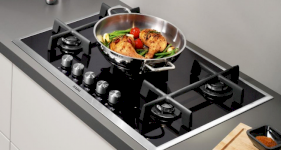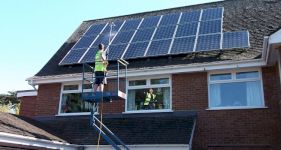Flat Roof Extension Cost
- The average cost of extending a flat roof is around £50,000
- The job will take approximately 8 - 10 weeks to complete
- A complete pricing breakdown which includes cost factors to consider, along with what such a task usually involves
- How long the job should approximately take and a general overview of what types of services can be performed
- How to find and hire flat roof specialists
Want to know the cost of having a flat roof extension installed?
On average, building a standard flat roof extension of around 25–30m² will cost approximately £50,000. However, costs can vary depending on the materials and complexities of the build, along with your location.
Just need a quote?
If so, we can help! We have a range of flat roof tradesmen ready to offer you a free quote!
In this guide, we'll look at the cost of installing different-sized flat roof extensions and explore other related subjects ranging from what's involved in installing flat roof extensions to what you should consider before hiring contractors for the job.
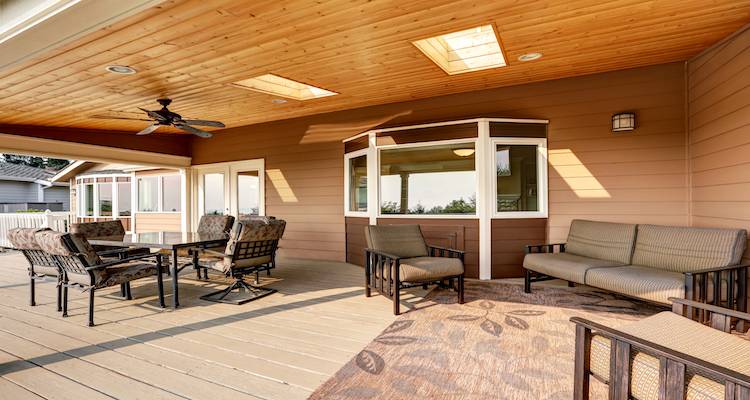
£50,000
Table of Contents
- How Much Is a Flat Roof Extension?
- Labour Costs and Timescales
- Additional Costs
- Cost Factors of a Flat Roof Extension
- What's Involved in a Flat Roof Extension?
- Interior Finishing
- Types of Flat Roof Extension
- Hiring Contractors for Installing a Flat Roof Extension Checklist
- Can I Install a Flat Roof Extension Myself?
- How Do You Insulate a Flat Roof Extension?
- Building Regulations & Planning Permission for a Flat Roof Extension
- Sources
How Much Is a Flat Roof Extension?
Costs can vary depending on the size, style and complexities of the roof extension, as such this can be anything from £25,000 to £85,000 or potentially even higher in more substantial projects.
So, what is the cost of a flat roof extension?
The average cost of fitting a flat roof extension is £25,000 to £45,000 for a 20m² extension, £30,000 to £55,500 for a 25m² extension, £35,000 to £65,000 for a 30m² extension, £40,000 to £75,000 for a 35m² extension, or £45,000 to £85,000 for a 40m² extension.
What sort of drainage systems can you get for flat roofs? We're thinking of a flat-roof extension but I don't know what the best option is to keep it draining well.
Flat Roof Extension Prices
The cost of a flat roof extension depends largely on the size of the installation, with estimated prices listed below (including materials and labour fees). However, the actual cost may vary, depending on factors such as ease of access and the extent of work that needs to be actioned.
Location also impacts the price, as labour fees tend to be higher in areas such as London and the South East.
| Size of Roof | Average Cost |
|---|---|
| 20m² | £25,000 to £45,000 |
| 25m² | £30,000 to £55,500 |
| 30m² | £35,000 to £65,000 |
| 35m² | £40,000 to £75,000 |
| 40m² | £45,000 to £85,000 |
Labour Costs and Timescales
The work is likely to last between eight and ten weeks. However, the work could be shorter or longer. An approximate average labour cost for this work would be £20,800 to £26,000, but it would depend on the size of the flat roof extension.
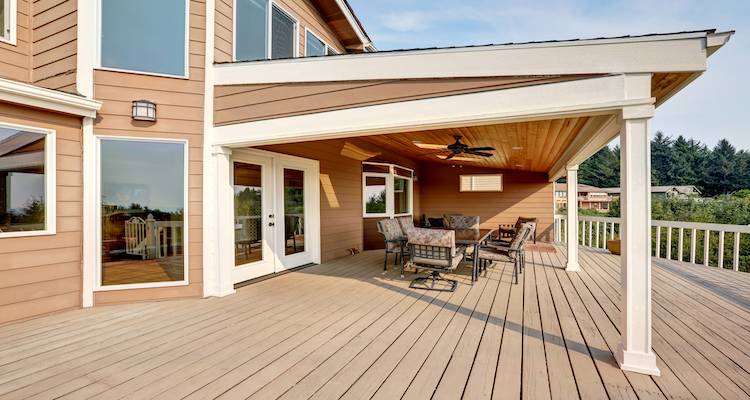
The cost of labour and work duration would vary depending on the size of the flat roof extension and the ease of access. Beyond that, where you live also matters when it comes to the cost of labour specifically.
| Size of Roof | Labour Only Cost |
|---|---|
| 20m² | £16,000 to £20,000 |
| 25m² | £20,000 to £25,000 |
| 30m² | £24,000 to £30,000 |
| 35m² | £28,000 to £35,000 |
| 40m² | £32,000 to £40,000 |
Supply Only Costs
We'll now look at the cost of materials only for installing a flat roof extension. This is as if you were to purchase the materials directly from a retailer.
Starting with the actual roof, the supply costs for an EPDM rubber roof are about £45 to 70 per m². For felt roofing, expect to pay between £30 and £45 per m².
Then you must consider the various other material costs for constructing a flat roof extension which would run into the thousands if not tens of thousands of pounds.
The supply costs of a flat roof extension tend to be lower than the cost of labour, but this will depend on a range of factors.
Additional Costs
When having a flat roof added to an extension, you may wish to pay for extra jobs to be undertaken around the same time. Let's have a look at some popular examples.
Gutter Replacement
While working on the roof, it's an ideal time to replace guttering where required. Prices vary depending on the type of property and the amount of guttering required, although as an average cost, expect to pay as follows:
- Plastic: £50 – £110
- Cast Iron: £460 – £920
- Copper: £650 – £1,250
- Steel: £390 – £790
- Zinc: £490 – £970
- Aluminium: £570 – £1,100
Replacing Roof Tiles
If your house roof needs to be freshened up, this would be a good opportunity to replace roof tiles.
To replace several roof tiles:
- Clay Tiles: £150 to £190
- Concrete Tiles: £180 to £220
- Slate Roof Tiles: £200 to £250
- Replace All Roof Tiles: £10,000 to £20,000
Fitting Fascias and Soffit Boards:
While installing a flat roof extension, it's the ideal opportunity to consider the cost of capping fascias soffits
- Capping a 2-Bedroom Home: £770
- Capping a 3-Bedroom Home: £950
- Capping a 4-Bedroom Home: £1,325
- Capping a Bungalow: £700
- Capping a Single 15m Wall: £290
As a guide, capping fascia and soffit boards to the front and gable end wall, based on 24m length in total is approximately £445.
Cost Factors of a Flat Roof Extension
There are many cost-affecting factors that can shape the price of a flat roof extension.
Type of Flat Roof Extension
First and foremost, the material used is an important consideration for working out the cost of an extension flat roof. A felt flat roof is among the cheaper options, whereas rubber and fibreglass roof options are more middle-ground choices. The same applies to the materials used for the rest of the extension.
In terms of design style, you may specifically want a modern flat roof extension or even a flat roof extension with lantern or overhang flat roof extension. Whatever your choice, the design of the flat roof extension would also shape the overall cost of installation.
Also whether you choose a single-storey extension or double extension etc.
Area of Installation
The larger the work area, the more expensive the materials will be. Beyond that, a larger work area would mean the job would take longer, and this may also increase the labour cost.
Location of Property
The reason that your location matters is that labour costs differ throughout the UK. Labour prices tend to be higher in the South East and London in particular. Whereas they are generally lower in places like the north of England, Scotland and Northern Ireland.
Ease of Access
The more accessible the workspace, the easier the job will be. As a result, it should take quicker and therefore come with a lower cost of labour.
What's Involved in a Flat Roof Extension?
The process of building a flat roof extension is long and complex and the methods can vary depending on the type of flat roof extension among other factors. We’ll look at an approximate guide to the process.
- Hiring Professionals: You may want to hire a company or even a contractor who, in turn, can assemble the rest of the labour required. Otherwise, you could contact all necessary professionals separately from a builder to an architect to an electrician, however, this would involve a ton of organisation and planning.
- Foundations: After the area has been surveyed, plans put in place and materials purchased, the foundation will be the first focus of the actual project. Professionals will handle this phase, ensuring a solid and compliant base is laid for the rest of the structure.
- Construction: Following the foundations, the exterior walls will be built, then the roof can be installed. Once the structure is sealed, interior work begins — usually starting with plastering or painting. You may also need to install roof insulation depending on building regulations.
- Finishing Touches: After this, other interior installations such as pipework and electrics can be carried out, as well as hanging doors and introducing furniture and any personal elements.
- Clean-up: Once the job is finished, waste removal expenses can come into play unless already part of the overall cost. A skip may be used, or those you hire may initially offer to take care of this for you. Make sure to have a plan in place for waste removal before work gets underway.
Interior Finishing
Depending on what you intend to use it for, once your flat roof extension has been built, you might have a range of other tasks to consider.
You should factor these into your overall costings, so you don't go over budget.
Electrics and Plumbing
Installing services such as electrics and plumbing will be necessary if the flat roof extension is to be part of your living space.
You'll need to consider radiators, sockets, and other elements that you'd typically find in a living area.
For example, you may want to explore the cost of spotlights and downlights to illuminate your new space, or perhaps the overall new bathroom cost if that's going to be part of the extension.
Insulation and Ventilation
To keep energy costs down, you should consider adding effective insulation to your flat roof extension. At the same time, you need to check whether there is adequate ventilation to stop damp building up in the space.
As an example, the typical cost of installing floor insulation can be anywhere between £210 and £950 for a 15 square metre room.
Plastering or Plasterboarding
If you're confident and have the right skills, you might be able to undertake any plastering or plasterboarding yourself to keep costs down.
You can use a plastering an indoor wall cost calculator to figure out how much it could cost to get a professional to do the job.
Painting and Decorating
Some of the more personal touches to any flat roof extension will be found in the way you choose to decorate the interior.
You can reduce the costs of painting and decorating by doing some of the work yourself, although you may want to hire a professional for that perfect finish.
Types of Flat Roof Extension
If you’re unsure what type of extension flat roof to go with, this section is for you. We’ll look at the features and pros and cons of various options in terms of the actual roofing material used.
EPDM
EPDM rubber roofing is a popular choice for flat roofs. Aside from being durable, EPDM requires minimal maintenance and offers a nice aesthetic. It is also relatively eco-friendly and easy to repair.
On the other hand, installation can be tricky, it is relatively damage-prone and you may find it more difficult to find someone to install an EPDM roof than other options.
Pros
- ✔ Lengthy lifespan of 30 to 50 years
- ✔ Highly weather-resistant
- ✔ Lightweight material
- ✔ Fairly low maintenance
Cons
- ✖ More expensive upfront
- ✖ Installation can fail if not done properly
- ✖ Not the most aesthetically pleasing option
- ✖ At risk of punctures
Roofing Felt
This option is fairly affordable, suited to various homes, easy to repair and visually appealing.
With that being said, it is not well-suited to footfall, requires a professional installation and is fairly damage-prone. You may need to remove and replace roofing felt more often than you would with EDPM.
Pros
- ✔ An affordable option
- ✔ Repairs can be patched easily
- ✔ Straightforward installation for experienced contractors
- ✔ Quick to install
Cons
- ✖ Only lasts around 10 to 20 years
- ✖ Susceptible to UV rays and other damage
- ✖ Needs regular maintenance
- ✖ Patch repairs can look untidy over time
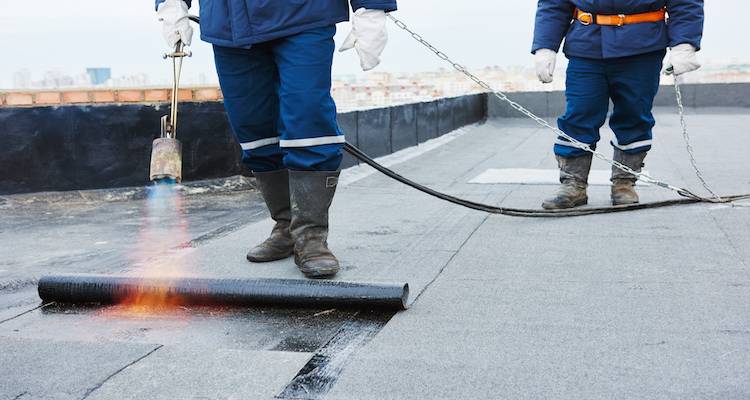
Built-up Roofing
Also known as BUR, built-up roofing is a popular choice for low-slope roofs. They are a great option if you want a flat roof that is water-resistant and protects against UV rays or/and a type of roofing that provides fire resistance.
However, BUR can be time-consuming to install and unless you go with the cold bitumen processes, installation comes with hazardous fumes. As a result, it should be left to a suitable professional. BUR is also prone to wind-related damage.
Pros
- ✔ Decent lifespan of 20 to 30 years
- ✔ Can have effective fire resistance
- ✔ Multi-layer design improves durability
- ✔ Great for large areas
Cons
- ✖ Heavy and so may need structural reinforcement
- ✖ An expensive option
- ✖ Complex to install
- ✖ Future leaks may be difficult to treat
Hiring Contractors for Installing a Flat Roof Extension Checklist
Before hiring a professional to fit an extension flat roof, there are some pointers worth taking into account.
Checklist for hiring a contractor to install an extension flat roof:
- What qualifications and/or experience do they have?
- How have customers rated them online?
- Are they part of an accreditation?
Can I Install a Flat Roof Extension Myself?
The vast majority of work must be done by a professional, especially in order to meet building regulations and legal standards. However, there are some jobs that can be carried out DIY to keep the cost down, such as basic insulation or painting and other finishing touches. If in any doubt, it’s best to leave all the work to hired and qualified contractors.
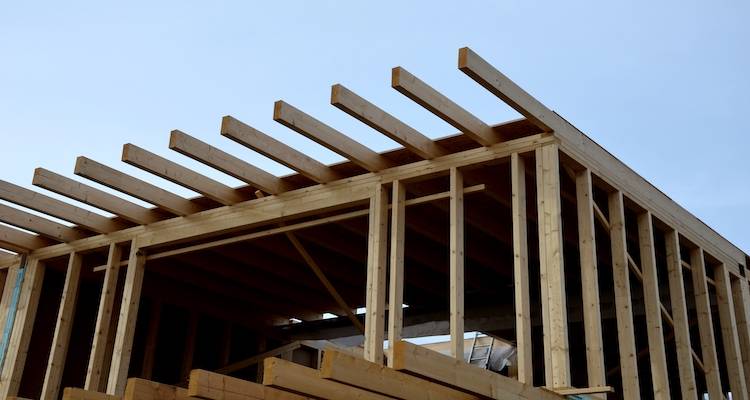
Some of the hazards/dangers include:
- Carrying heavy materials
- Working at a height
- Incorrect installation (this can also pose dangers to safety over time or even in the immediate term)
Remember, however, that you can cut the cost of your flat roof extension by completing some interior tasks such as painting and decorating yourself.
How Do You Insulate a Flat Roof Extension?
There are several steps you’ll need to take. They are as follows.
- Lay 1.2cm of OSB board or plywood along the timber joists as a base
- Fit a vapour control layer. The purpose of this is to lower the danger that moisture/condensation will compromise the structure of your flat roof
- Make markings on the vapour control layer at the point at which fixings will pierce through the membrane. To be more specific, you want to do this at the rafter centres and correct axial spacing
- Add butyl tape at the points at which the fixings will pierce the vapour control layer. The reason for this is to ensure the tape forms a seal after penetration
- Next, you’ll want to fit rigid insulation board (the thickness will depend on the type of flat roof and other factors). The exact nature of the rigid insulation board would depend on the height available based on guttering, upstands as well as adornments
- Add the next layer of OSB board or plywood
- Use helical fixings to fix the deck together. You need to pierce every layer of the roof building up. This includes the flat roof insulation
- Lastly, add a waterproof membrane
Building Regulations & Planning Permission for a Flat Roof Extension
Planning permission isn't generally required for a flat roof extension, as they largely fall within permitted development rights. The exceptions being if you live in a listed building or conservation area, the extension requires structural changes or changes the appearance of the property.
If in doubt, it's advisable to contact your local planning authority. Submitting a planning application typically costs around £200 (there may be local differences), and decisions are usually made within eight weeks.
For more information, visit the Planning Portal. Please note that rules for England/Wales may differ from the rest of the UK.
To comply with building regulations, the roof should have a minimum fall of 1:40 to ensure effective rainwater drainage, usually guiding excess water towards the edge of the roof.
The structure must be capable of withstanding high winds and strong enough to be safely walked on if access is required, and a waterproof membrane should extend at least 150mm (15cm) up any adjoining walls.
In addition, if more than 25% of the roof area is being replaced or extended, the thermal insulation must also be upgraded to meet the requirements of Part L of the Building Regulations.
FAQs
How do you maintain a flat roof?
What are the signs a flat roor needs replacing?
Does installing a flat roof extension affect my home insurance?
How to run cables on a flat felt roof extension?
How much value will an extension add to my home?
Sources
https://www.roofinglines.co.uk/blog/the-pros-and-cons-of-using-epdm



